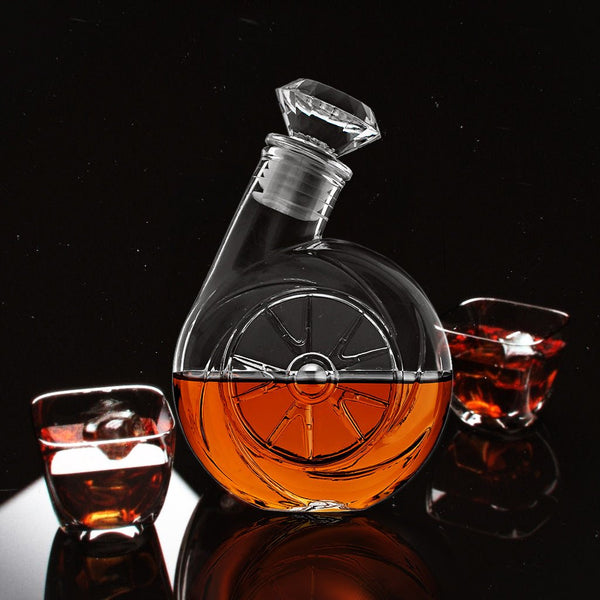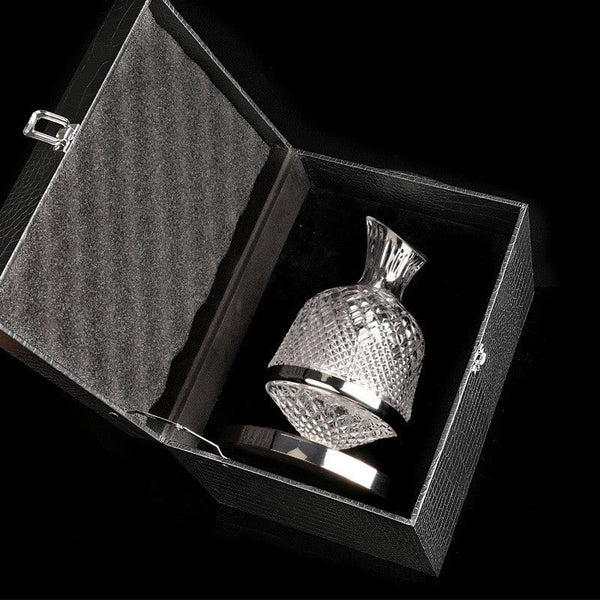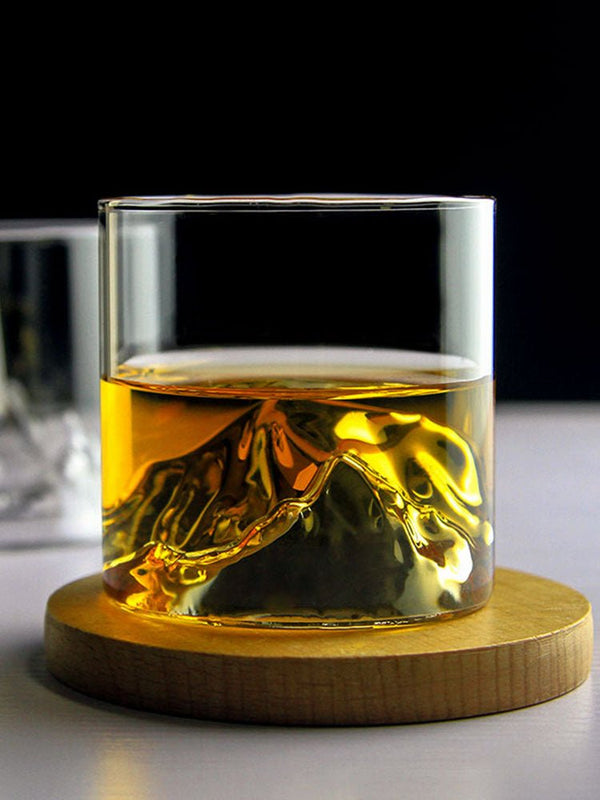Do whisky glasses make a difference?
Products on sale
-
 Turbocharger Whiskey Decanter
Turbocharger Whiskey Decanter
- Regular price
- $42.99
- Sale price
- $42.99
- Regular price
-
$56.99 - Unit price
- per
Sold out -
 Crystal-cut Rotating Decanter
Crystal-cut Rotating Decanter
- Regular price
- from $119.81
- Sale price
- from $119.81
- Regular price
-
$160.00 - Unit price
- per
Sold out -
 Japanese Whisky Glass
Japanese Whisky Glass
- Regular price
- from $24.99
- Sale price
- from $24.99
- Regular price
-
- Unit price
- per
Sold out
The experience of drinking whisky can be greatly influenced by various factors, including the type of glass used.
While it may seem trivial, the shape, size, and design of a whisky glass can significantly affect the aroma, flavor, and overall enjoyment of the spirit.
This article explores how different whisky glasses can impact your drinking experience and why the right glass matters.
Understanding the impact of glassware on whisky
The design of a whisky glass plays a crucial role in how we perceive the aromas and flavors of the whisky.
Different glass shapes can concentrate or disperse the aromatic compounds, influencing the tasting experience.
The right glass can enhance the nuances of the whisky, while the wrong glass can mask or distort them.
Types of whisky glasses and their effects
There are several types of whisky glasses, each with its unique characteristics and benefits.
Here are some of the most popular ones:
The Glencairn glass
The Glencairn glass is often considered the gold standard for whisky tasting.
Its tulip shape is designed to concentrate the aromas, allowing for a more intense and focused smelling experience.
The wide bowl gives the whisky room to breathe, while the narrow rim directs the aromas towards the nose.
This glass is ideal for both nosing and tasting, making it a favorite among whisky enthusiasts and professionals.
The tumbler
Also known as the rocks glass or Old Fashioned glass, the tumbler is a popular choice for casual whisky drinking.
Its wide, flat bottom and straight sides are perfect for serving whisky on the rocks or in cocktails. However, the tumbler's design does not concentrate the aromas as effectively as other glasses, which can lead to a less nuanced tasting experience.
While it's great for casual sipping, it may not be the best choice for appreciating the full complexity of a fine whisky.
The copita
The copita glass, also known as a sherry glass, has a tulip shape similar to the Glencairn but with a longer stem.
This design allows the drinker to hold the glass without warming the whisky with their hand.
The copita is excellent for nosing and tasting, as it concentrates the aromas and directs them towards the nose.
It is often used in professional tastings and whisky competitions.
The snifter
The snifter, commonly used for brandy, can also be used for whisky.
Its wide bowl allows the whisky to breathe, while the narrow top concentrates the aromas. However, the short stem and large bowl can make it difficult to swirl the whisky without spilling, and holding the bowl can warm the whisky, potentially altering its flavor profile.
While it can be a good option for certain types of whisky, it may not be ideal for all.
The highball
The highball glass is tall and straight, typically used for whisky mixed with soda or other beverages.
Its not designed for nosing or appreciating the full aroma of the whisky, but it's perfect for enjoying whisky in a refreshing, long drink format.
The highball glass is more about the drinking experience than the tasting experience.
Why glass shape matters
The shape of the glass affects how the whisky's aromas are concentrated and delivered to the nose.
A narrower rim helps to focus the aromas, allowing you to pick up on the subtler notes that might be lost in a wider glass.
Additionally, the shape of the bowl influences how the whisky interacts with the air, which can impact its flavor profile.
How to choose the right whisky glass
Choosing the right whisky glass depends on the type of whisky you're drinking and how you prefer to enjoy it. Here are some tips to help you decide:
- For tasting and appreciating complex whiskies: Opt for a Glencairn, copita, or snifter glass. These shapes will help you fully appreciate the whisky's aromas and flavors.
- For casual sipping or mixed drinks: A tumbler or highball glass is suitable. These glasses are versatile and practical for everyday use.
- For professional tastings or competitions: The copita glass is often the preferred choice due to its ability to concentrate aromas and keep the whisky at a stable temperature.
Tips for enhancing your whisky experience
To get the most out of your whisky, consider the following tips:
- Use proper glassware: As discussed, the right glass can significantly enhance your whisky tasting experience.
- Pay attention to temperature: Whisky is best enjoyed at room temperature. Avoid over-warming the glass with your hand or chilling it excessively.
- Allow the whisky to breathe: Letting the whisky sit in the glass for a few minutes can help open up its aromas and flavors.
- Experiment with water: Adding a few drops of water can help release more aromatic compounds and make the whisky more approachable.
- Take your time: Whisky is meant to be savored slowly. Take your time to appreciate its complexity and enjoy the experience.
FAQ
Does the shape of a whisky glass really matter?
Yes, the shape of the glass can significantly impact how you perceive the aromas and flavors of the whisky. glasses designed to concentrate aromas, like the Glencairn or copita, can enhance the tasting experience.
Can I use a tumbler for whisky tasting?
While a tumbler is great for casual sipping or mixed drinks, it may not be the best choice for tasting. Its wide opening does not concentrate aromas as effectively as a tulip-shaped glass.
What is the best glass for nosing whisky?
The Glencairn and copita glasses are both excellent choices for nosing whisky. Their shapes are designed to concentrate and direct the aromas towards your nose.
Should I always use a specific type of glass for whisky?
It depends on how you prefer to enjoy your whisky. For serious tasting and appreciating complex whiskies, a tulip-shaped glass is best. For casual sipping or mixed drinks, a tumbler or highball glass is suitable.
Does the material of the glass matter?
Most whisky glasses are made of clear glass to allow you to appreciate the color of the whisky. High-quality glass can also enhance the visual and tactile experience, but the shape is more important than the material.



